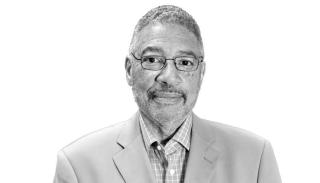
Misunderstandings Mangle Meaningful New Approaches To Drug Addiction Problem
MORE IN THIS SECTION
Figueroa-Vargas knows that safe injection sites are not ‘shooting galleries’ where drug use is actively encouraged and drug abuse is citywide not limited to a few low-income communities.
Figueroa-Vargas’ insights on Philadelphia’s overdose death crisis – among America’s worse – come from knowing the drug abuse problem from the dual perspectives of being a former drug addict and a current harm reduction activist working with drug abusers.
“The public needs to know that safe injection sites are not just places to shoot-up and leave. They are places to engage with medical professionals, social workers and peer support persons,” Figueroa-Vargas said, noting public awareness could be better informed by using different phrasing for safe injection sites like: Comprehensive User Engagement Sites.
The NIMBY (Not In My Back Yard) reaction to possible placement of safe injection/User Engagement sites dismisses the discomforting reality that Philadelphia’s heroin/opioid crisis is citywide found on all rungs of the economic ladder.
“While there is a high-rate of overdoses in Kensington, opioid use is actually across Philadelphia. Narcotics are not a Kensington-only problem. Other neighborhoods need to buy into this fact,” Figueroa-Vargas said.
Figueroa-Vargas said negative reactions among many Philadelphia residents to new approaches to address the drug abuse crisis are natural but “what is unreasonable is making decisions by not having adequate information. The public needs to learn more about harm reductions.”
Misunderstandings about the matrix surroundings drugs is prevalent across society up to President Trump who recently suggested execution for drug dealers as a solution to the crisis – a proposal Figueroa-Vargas flatly rejects as not solving anything.
“What drives many people to drugs are things like being poor and having untreated mental health issues. Trump needs to understand this,” Figueroa-Vargas said.
“When I was in prison I heard a guard once say that I used drugs to run away from life. When I thought about what that guard said I realized the guard was right. I did have a poor life and drugs were an escape,” he said.
One aspect of the drug problem that many in minority communities clearly understand is the racism that has infected how American society responds to drugs.
The compassion shown for those gripped by today’s drug crisis coincide with whites now being the largest demographic among overdose deaths.
The current compassionate calls for treatment and other non-law enforcement options contrast to past practices that deliberately targeted minorities for both arrest and long prison sentences.
During the early 1990s in Philadelphia, for example, federal studies documented that white women were the largest category of heroin users in the city but were the category least likely to endure harsh enforcement.
“The first step in the process of recovery from drug addiction is staying alive,” Figueroa-Vargas said about the benefits of injection sites.
“If you’re dead, you can’t enter treatment.”







LEAVE A COMMENT:
Join the discussion! Leave a comment.